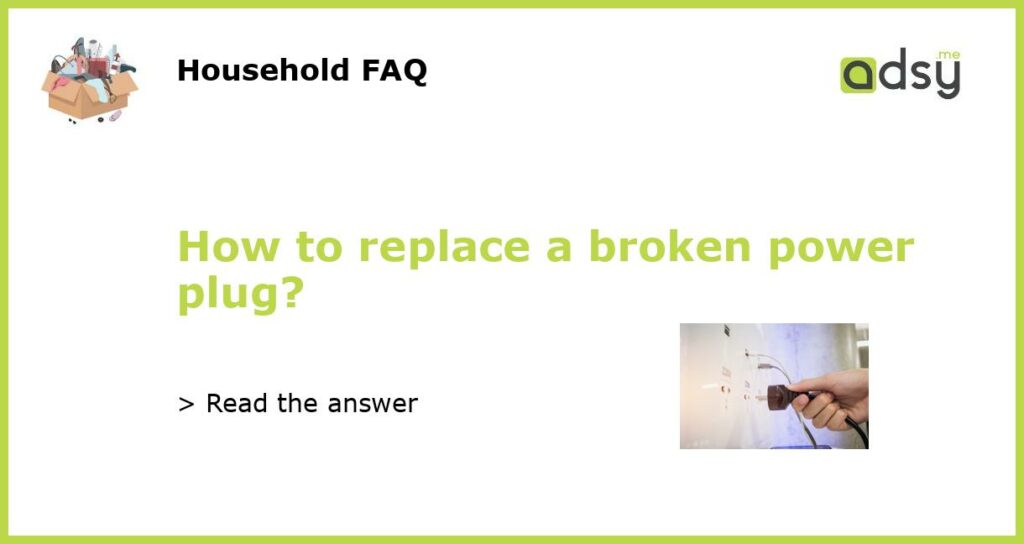Replacing a Broken Power Plug: Step-by-Step Guide
Having a broken power plug can be frustrating and inconvenient, especially when you rely on electronic devices for various tasks. However, the good news is that replacing a broken power plug is a relatively simple process that you can do on your own.
Gather the Necessary Tools and Materials
Before you start the replacement process, it’s essential to gather all the necessary tools and materials. You will need:
- A new power plug
- A wire cutter/stripper
- A screwdriver (flathead or Phillips, depending on the type of plug)
- Electrical tape or heat shrink tubing
- A lighter or heat gun (if using heat shrink tubing)
Disconnect Power and Examine the Broken Plug
First and foremost, ensure that the device is not connected to any power source. Safety should always be a priority when working with electrical components.
Next, carefully examine the broken power plug. Determine which part needs to be replaced: the male (prongs) or female (socket) end. Additionally, take note of any visible damage to the wires or insulation surrounding them.
Remove the Old Plug
Using a screwdriver, unscrew and remove the cover of the broken power plug. This will give you access to the inner connections and wires.
If the plug is damaged beyond repair or the wires are frayed and exposed, cut them off using a wire cutter. Leave enough length to work with when attaching the new plug.
Connect the New Plug
Strip the insulation from the ends of the wires, exposing enough bare wire for a secure connection. If using heat shrink tubing, slide it onto one end of the wire before attaching the new plug.
Attach each wire to its corresponding terminal on the new plug. Generally, green or bare wires are for grounding, black or red wires are for power, and white or gray wires are for neutral. However, it’s crucial to follow the instructions provided with the new plug or consult a professional if you are unsure.
Once each wire is securely connected, tighten any screws or fasteners to ensure a tight fit.
Secure and Test the New Plug
If you are using electrical tape, wrap it tightly around the connections to insulate them. Be sure to cover any exposed wires completely.
If you are using heat shrink tubing, use a lighter or heat gun to shrink and seal the tubing around the connections. This will provide a more durable and professional finish.
After securing the connections, reattach the cover of the power plug and tighten any screws.
Finally, it’s crucial to test the newly replaced power plug before using your device. Plug it into a power source and check if the device receives power correctly.
Ensure that the device functions as intended, and there are no sparks, unusual noises, or other signs of malfunction.
Replacing a broken power plug is a simple task that you can handle on your own, provided you follow the proper steps and take the necessary safety precautions. By gathering the required tools and materials, disconnecting power, examining the broken plug, removing the old plug, connecting the new plug correctly, and securing and testing the new plug, you can restore power to your electronic devices and get back to using them hassle-free.






